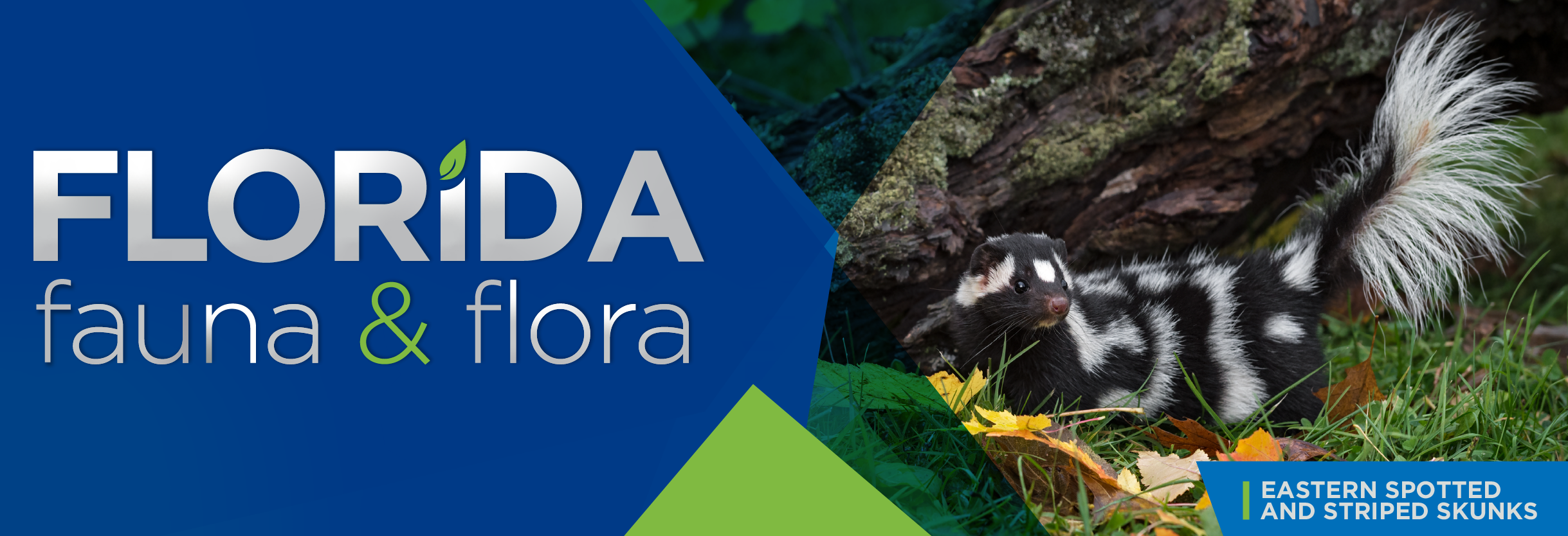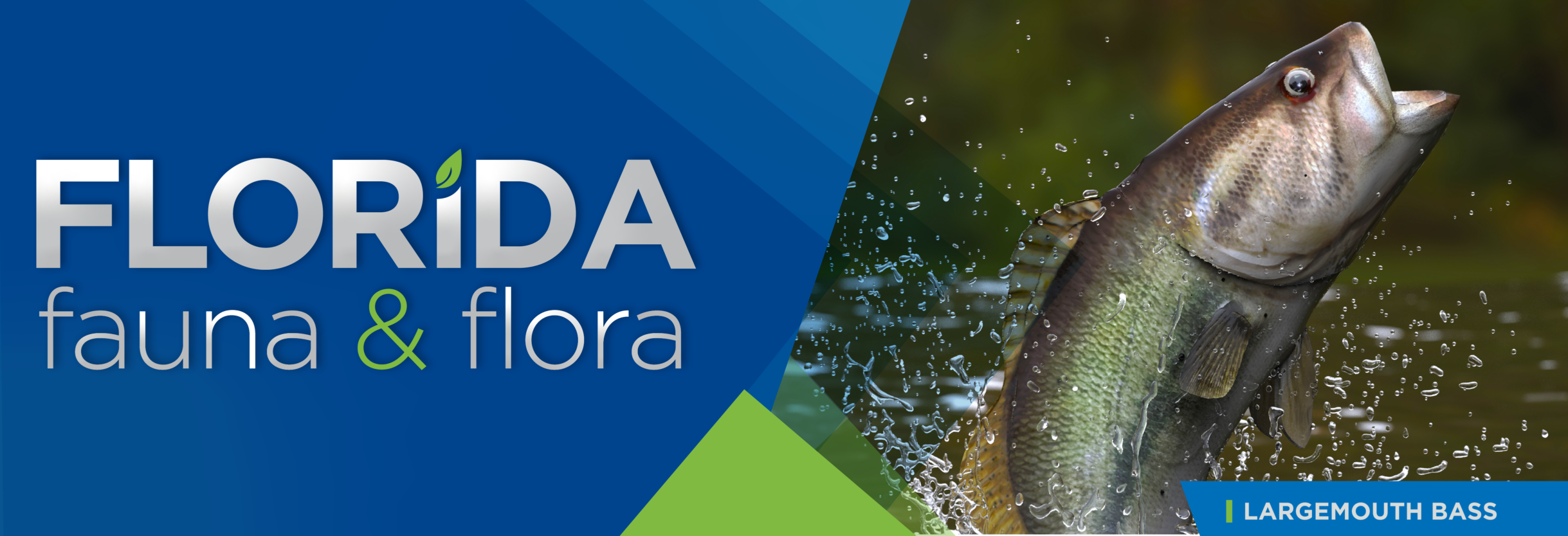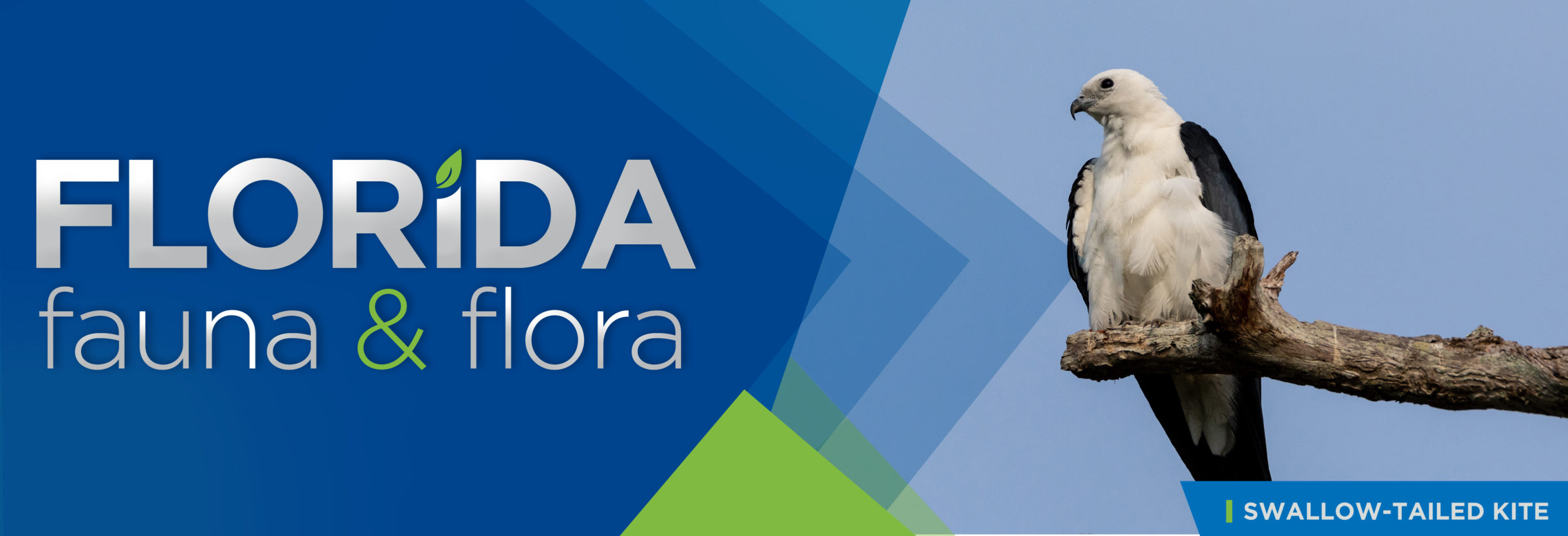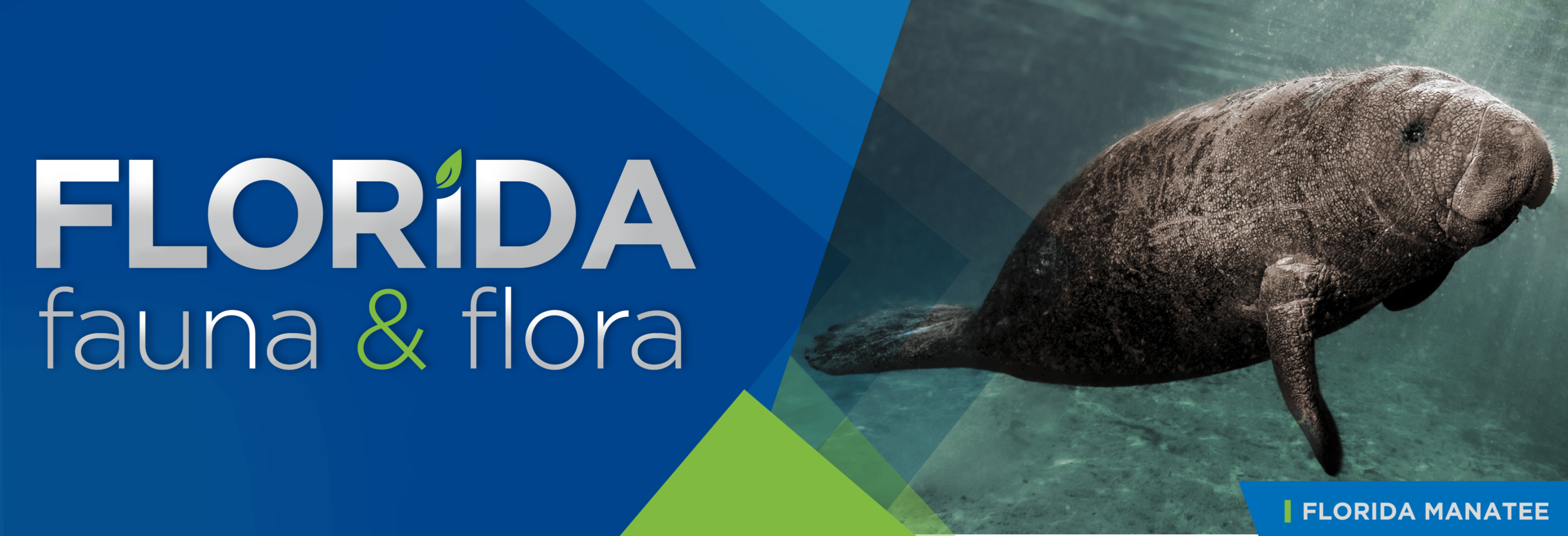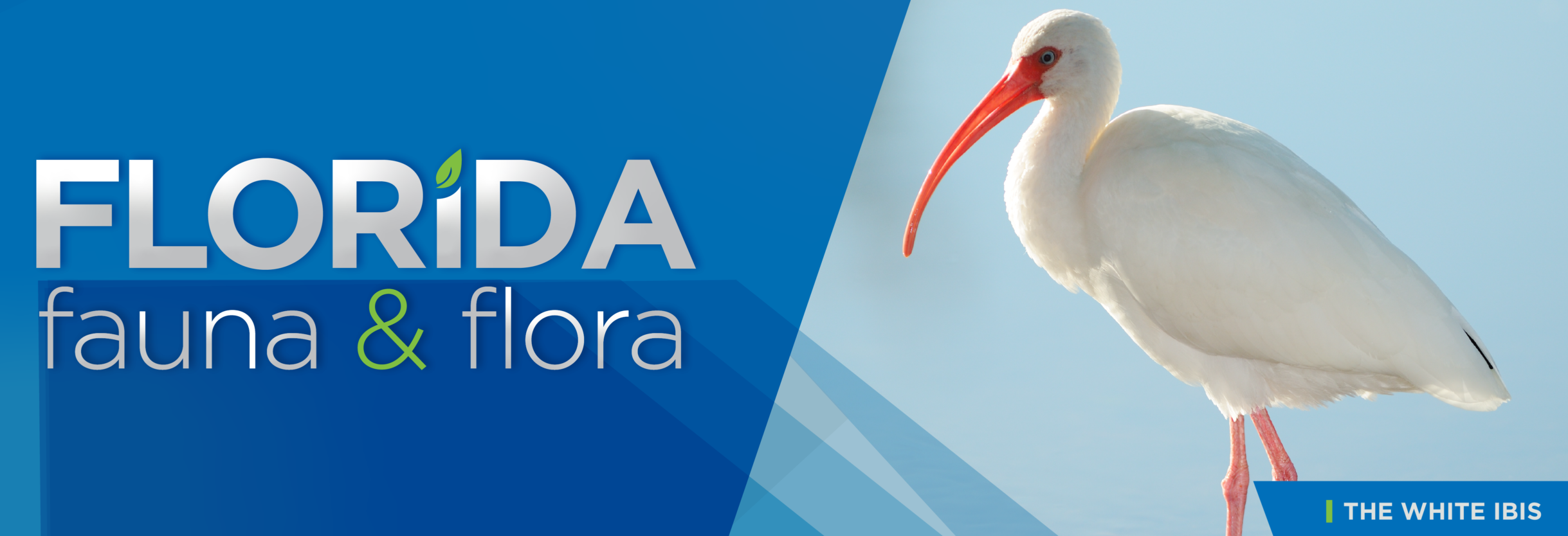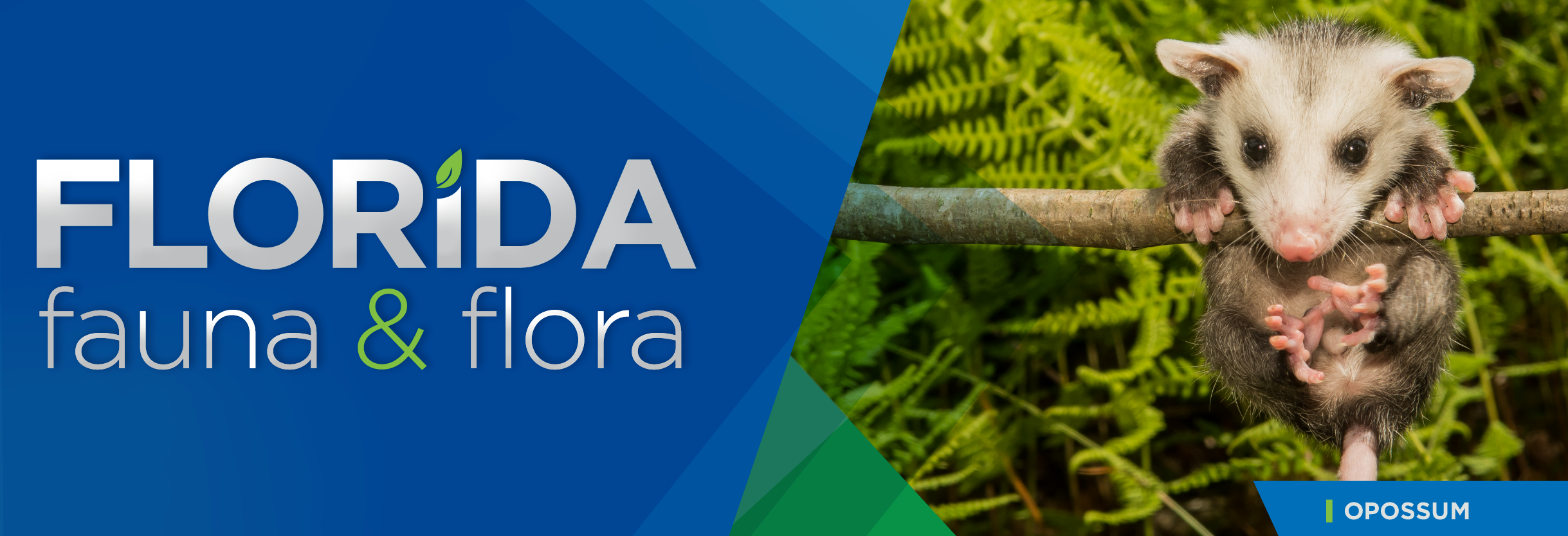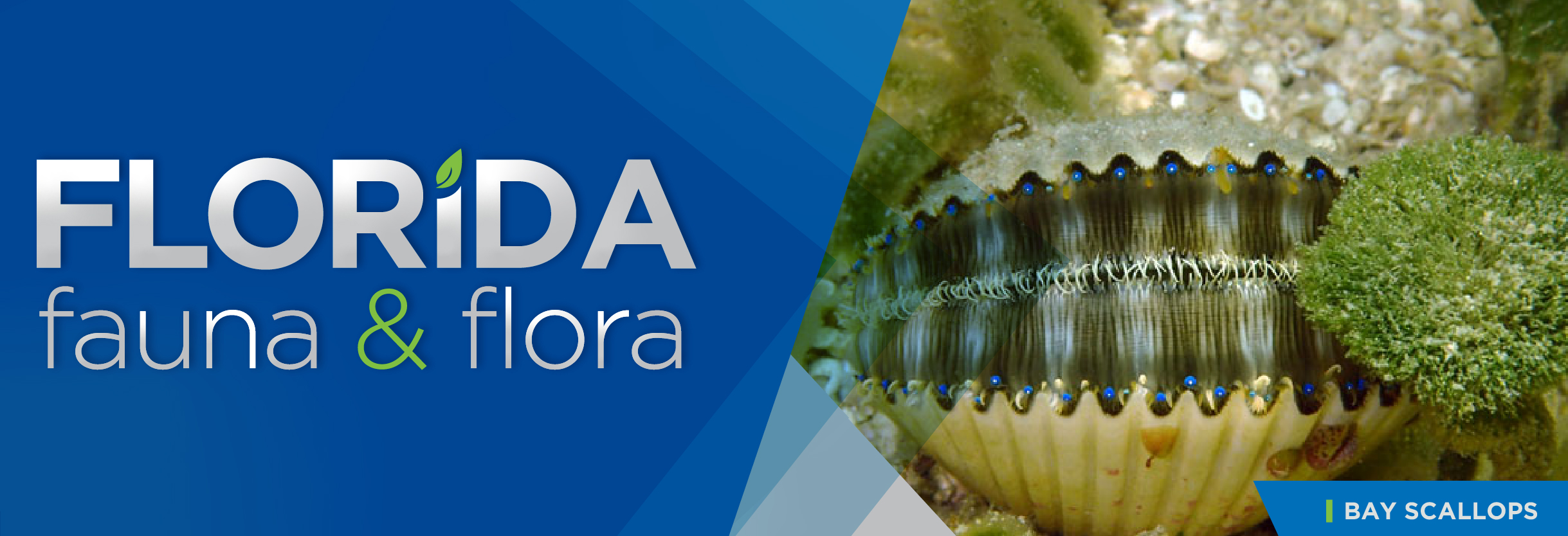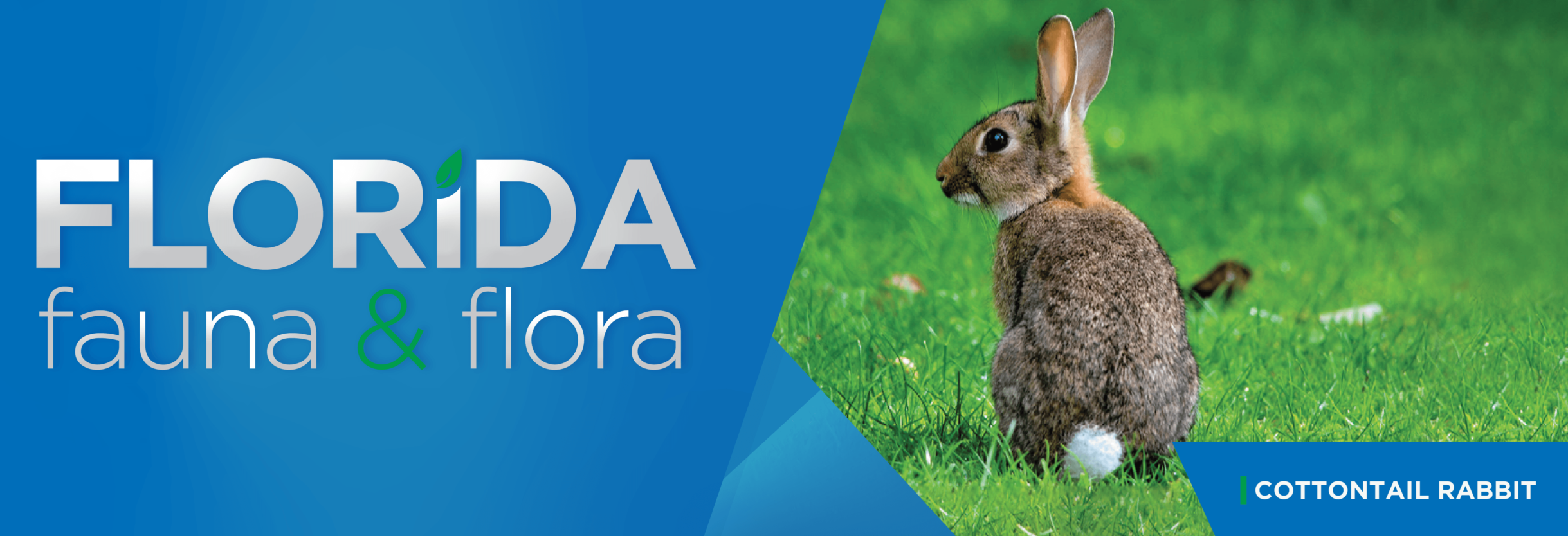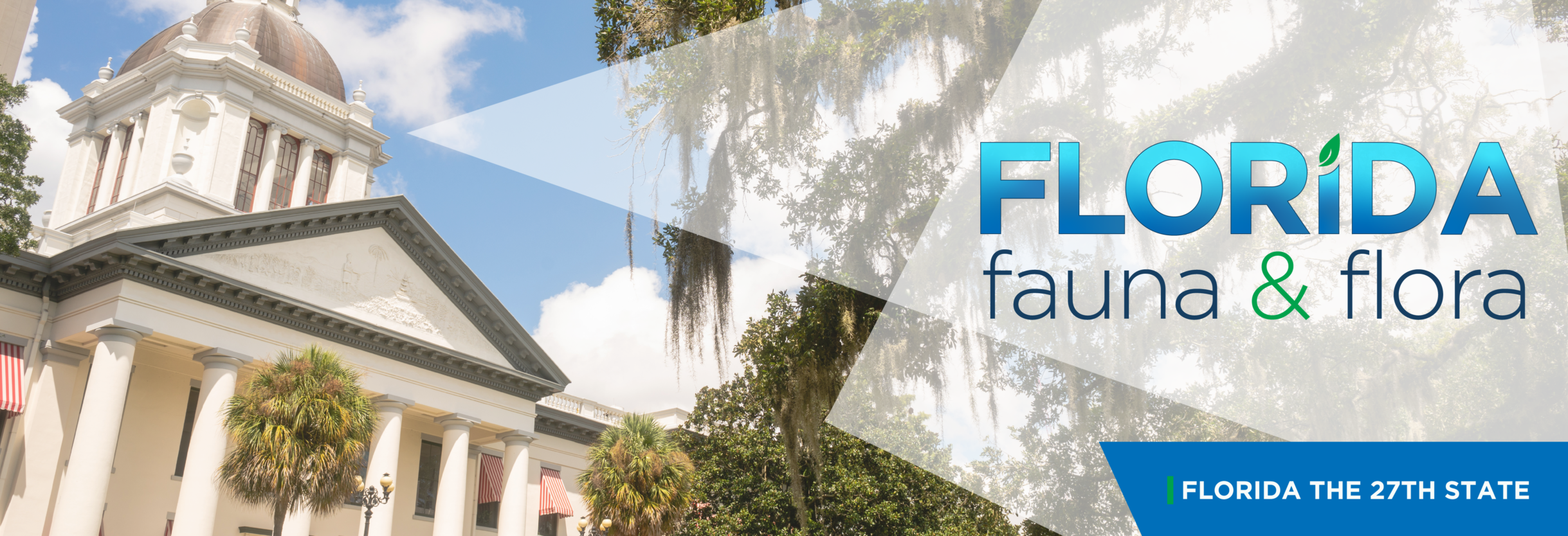Florida Fauna & Flora – Eastern Spotted & Striped Skunks
Eastern spotted skunks and striped skunks are found in all areas of Florida except for the Keys. These common Florida skunks are the size of a housecat. They have black and white fur, small heads, short legs, bushy tails and most notably an ability to spray an oily, unpleasant-smelling musk (up to 15 feet) that is hard to ignore.
Female skunks give birth in the spring to a litter of four to seven kits. Around six weeks old, the kits learn to forage for food with their mother and remain with her for several months. They learn defensive strategies, the most effective being the aforementioned oily, musky spray that deters predators.
The skunk’s chief predator is the great horned owl although loss of habitat has drastically reduced the skunk population in recent years. Skunks are omnivores – their diet includes both animals and plants. They are usually active at night and are known to knock over trash cans and forage for food scraps.
Fun Fauna Fact: Like Pepé Le Pew there’s a lot to love about skunks (except the smell). The striped skunks’ diet is heavy on insects – about 70% – great for pest control.
Read the full May 2020 SECO News online.



